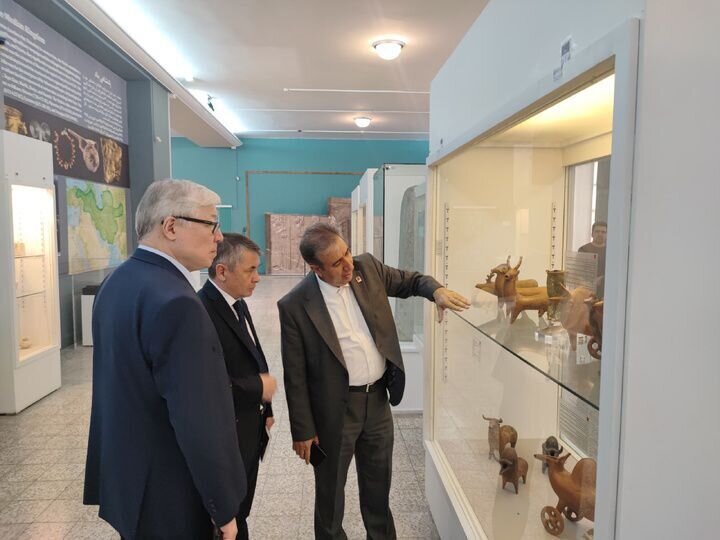Tehran – Jebrel Nokande, director of the Iranian National Museum, and his Kazafe counterparts arranged to expand the joint exhibition and museum collaboration.
On Thursday, Berik Abdygaliuly sat down with Nokande on a visit to the prestigious Tehran Museum to discuss possible ways to expand bonds, highlighting the importance of cultural cooperation and collaboration between museums.
They have reached an agreement on holding a joint exhibition and establishing a shared digital database for the exchange of cultural information and artifacts, the IRNA reported.
Nokande highlighted the shared cultural heritage of both countries and referred to the memorandum between their museums. He expressed Iran’s preparations to expand cultural cooperation and connections between museums. Among his proposals was the organization of the joint exhibition and the creation of a shared digital database to facilitate the exchange of cultural data and artifacts, the report states.
Abdygaliuly also emphasized the importance of implementing the terms of the memorandum, noting that the shared heritage between Iran and Kazakhstan traverses various historical periods, including the Scythians, Islam, and in particular the Timorid period. He proposed an exhibition of artifacts at the Iranian National Museum in Kazakhstan this year, as well as an exhibition of the Kazakhstan National Museum Collection in Iran in 2026.
Both sides have taken necessary action through official diplomatic channels and agreed to hold these joint exhibitions in the near future.
After the meeting, guests toured the Iranian National Museum and became accustomed to the country’s historic and cultural treasures.
Founded in downtown Tehran in 1937, the Iranian National Museum is the country’s leading museum and important institution for preserving and presenting Iran’s archaeological and cultural heritage. The museum has a diverse collection of artifacts ranging from prehistoric to Islamic times, including valuable works such as ancient pottery, textiles and coins. As a centre of research and education, the National Museum plays an important role in understanding Iran’s rich history and connections with other cultures, particularly through important collections such as Chinese pottery, which emphasize interactions along the Silk Road.
The collection represents Iran’s more than a million years of human settlements and cultural achievements, ranging from the Paleolithic period to the late Islamic period. Personal jewelry from the Paleostone Age, clay and human figurines from early village communities, the earliest evidence of writing from the 4th millennium BC, the salvation of stones from Persepolis and the capital, life-size bronze bronze bronze statues of Parthia, the natural mumy called “Shami Mann”, “Saltman”, prayer, muhanid miche, and the pen and ink paintings (Sia Kalam) of Leza Abbasi in the Safavid period are one of the important objects of the museum.
morning

